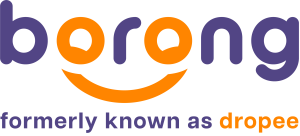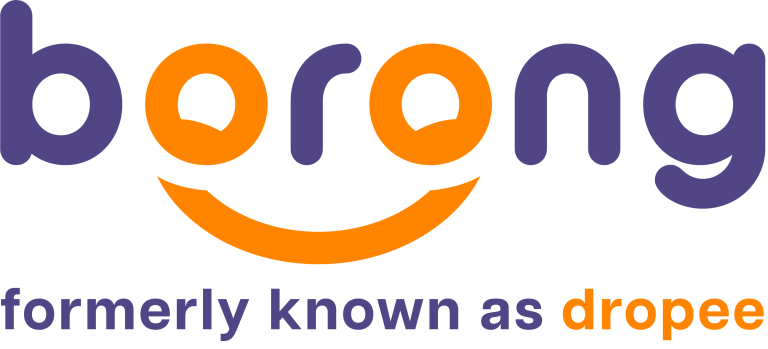Unlike the B2C market, which has been through continuous digitisation and innovation, B2B is much more grounded in its ways. B2B players have always relied on relationships, referrals and customer retention to drive growth.
It’s taken some time but the market is changing – especially after Covid-19. Going digital and branching out into e-commerce was a lifeline for B2B owners when the pandemic hit. But more and more businesses are embracing a digital-first mindset after experiencing positive results.
At the end of the day, it all comes back to customer experience. And going digital is the key to delivering an excellent experience to customers. B2B players that don’t speed up digital transformation now risk getting left behind while the rest of the market pivots.
We can help with that! Dropee has come up with an e-commerce training guide to help you map out your digitisation journey based on where you are on the digital maturity scale, with recommendations included.
E-commerce Training for B2B Busineses
Create a Roadmap Based on Your Digitisation Journey

A digitisation roadmap charts the link between your e-commerce goals and current strategy. The goal of creating a roadmap is to ensure that your plan and digital solutions address the gaps in your business. At the same time, it helps all stakeholders stay aligned.
These are the questions you should ask yourself before planning your digitisation roadmap:
- Do I have an online presence? Does my business have an online store, list on online marketplaces or have social media channels?
- What is the average online sales value per week for my business?
- How many online transactions on average do I get per week?
- What is my digitisation budget?
By asking yourself these questions, you can identify where you are on the digital maturity scale, which will give you a better idea of what your business needs to drive more conversions and engagement digitally.
E-commerce Training by Digital Maturity Level

The most effective way to get e-commerce training is to start at the right level. Digital transformation can be a long process and the technology or solution your business needs vary depending on your digital adoption level. This is why we have broken it down into three levels, from beginner to advanced.
By understanding your digital maturity level, you can complement your business with the right tools or services that provide the most value.
Beginner
Businesses at this level largely operate offline and are at the beginning of the e-commerce journey. If you have yet to digitise, you’re no stranger to the struggles of traditional B2B amidst the Covid-19 disruptions.
B2B customers have experienced the same frustrations, which pushed them to find more convenient alternatives – online. To meet current customer needs, it is critical that you build your digital presence and get visibility online quickly.
Recommendation:
The fastest and most cost-friendly solution for businesses starting their e-commerce journey are online marketplaces. Businesses that sign up to an online marketplace will gain instant access to an existing large customer base and the tools to sell in bulk online.
Here’s what you need to do to find the right marketplace:
- Analyse online marketplaces’ customer demographics and core offerings to see if they match yours. If you are selling wholesale goods, a marketplace geared for B2B will have the most relevant buyers.
- Look for features that can facilitate sales. For B2B sellers, this means customisable pricing and payment or shipping options for a seamless customer experience.
- Check if the marketplace is reliable. Is its product delivery prompt? Does it offer enough support? Make sure that the platform can facilitate efficient processes for you and your customers.
- Find out if the marketplace offers credit terms. On our marketplace, you can apply for Dropee Credit and get access to credit terms with 0% interest fees to order any product!
B2B businesses at this stage can also build an online presence through social media. However, social media is more suited to engaging customers and building brand awareness than e-commerce. This is because social media lacks the capabilities to allow businesses to scale.
Intermediate
At the intermediate level, businesses have established a digital presence by listing on online marketplaces and maintaining social media accounts. While marketplaces are a good starting point, it has its limits.
One of the drawbacks of online marketplaces is the stiff competition from other sellers that are listing on the same site as you. Smart promotions and pricing can help you stand out from the competitors. But you need access to sales data and analytics that you can’t get on marketplaces.
Without insights on customer behaviour and demand, you can’t make data-driven decisions – which is key in creating a unique customer experience and building loyalty.
Recommendation:
Develop your own branded online store for greater control of the customer experience, sales data, pricing and promotions. There is no need to start from scratch, as SaaS platforms like Dropee Direct offer a one-stop B2B e-commerce suite to help you customise your online store in no time.
A branded online store allows you to deliver unique, personalised shopping experiences to customers while automating processes. This in turn helps you scale, drive sales and strengthen relationships.
Here’s what you can do with your branded online store:
- Customise the store to your liking
- Personalise product catalogues, pricing and promotions
- Track sales in real-time, from payment status to order delivery
- Integrate with existing softwares for greater visibility
- Use actionable sales and customer analytics to spot opportunities
- Gain access to security and back-end support
Advanced
Advanced businesses are well-versed with digital tools – using many for operational efficiency and to improve the customer experience. If you are at this level, you likely have multiple offline and online channels to reach your customers everywhere.
Now, your biggest challenge is how to manage all of your channels at the same time.
Recommendation:
To fine-tune your omnichannel capabilities, you need to upgrade to a cloud-based POS (point of sale) and OMS (order management system) solution to merge multiple channels and manage them simultaneously.
A cloud-based system allows businesses to keep track of sales performance and manage inventory levels from a single dashboard. This is crucial for businesses with a presence on multiple platforms, be it a physical store, marketplace or branded online store.
With greater visibility across the supply chain, you can improve efficiency and accuracy as all of your data will be stored in a single source.
Capabilities that a cloud system offer:
- Visibility of product movement
- Real-time order processing, from pick and pack to dispatch
- Automatic synchronisation of order status and inventory levels
- Fewer duplications and errors across channels and inventory with data merging
- Monitor orders, sales, revenue and performance remotely
Speed Up Digital Transformation
Whether you are at the beginner or intermediate level, delaying digital transformation can seriously set you back in a rapidly changing market.
Start e-commerce training and charting your digitisation roadmap now to determine your level of digital maturity and implement the right solutions for your business. For more information on how Dropee can help you speed up the process, get in touch with us here!


